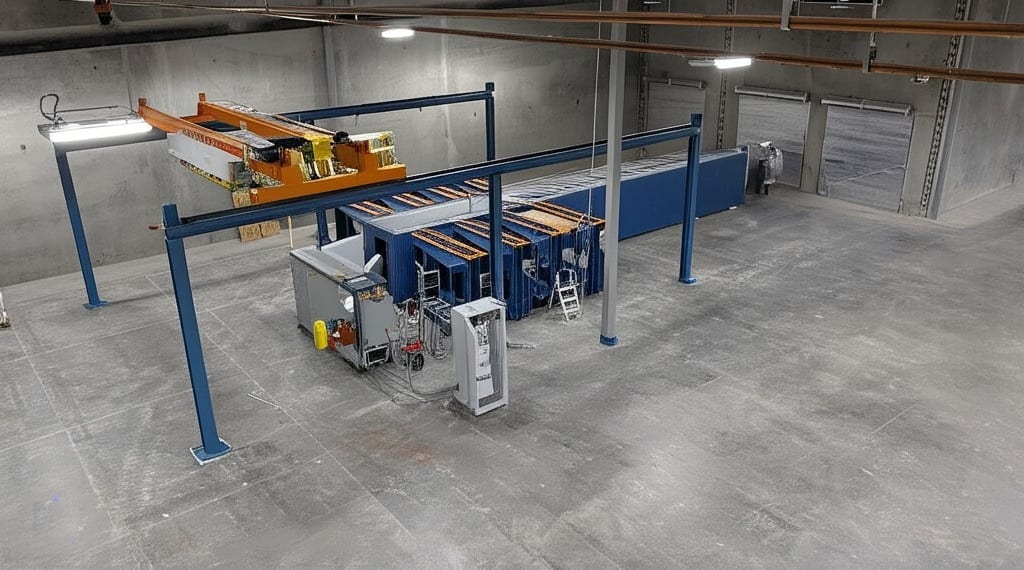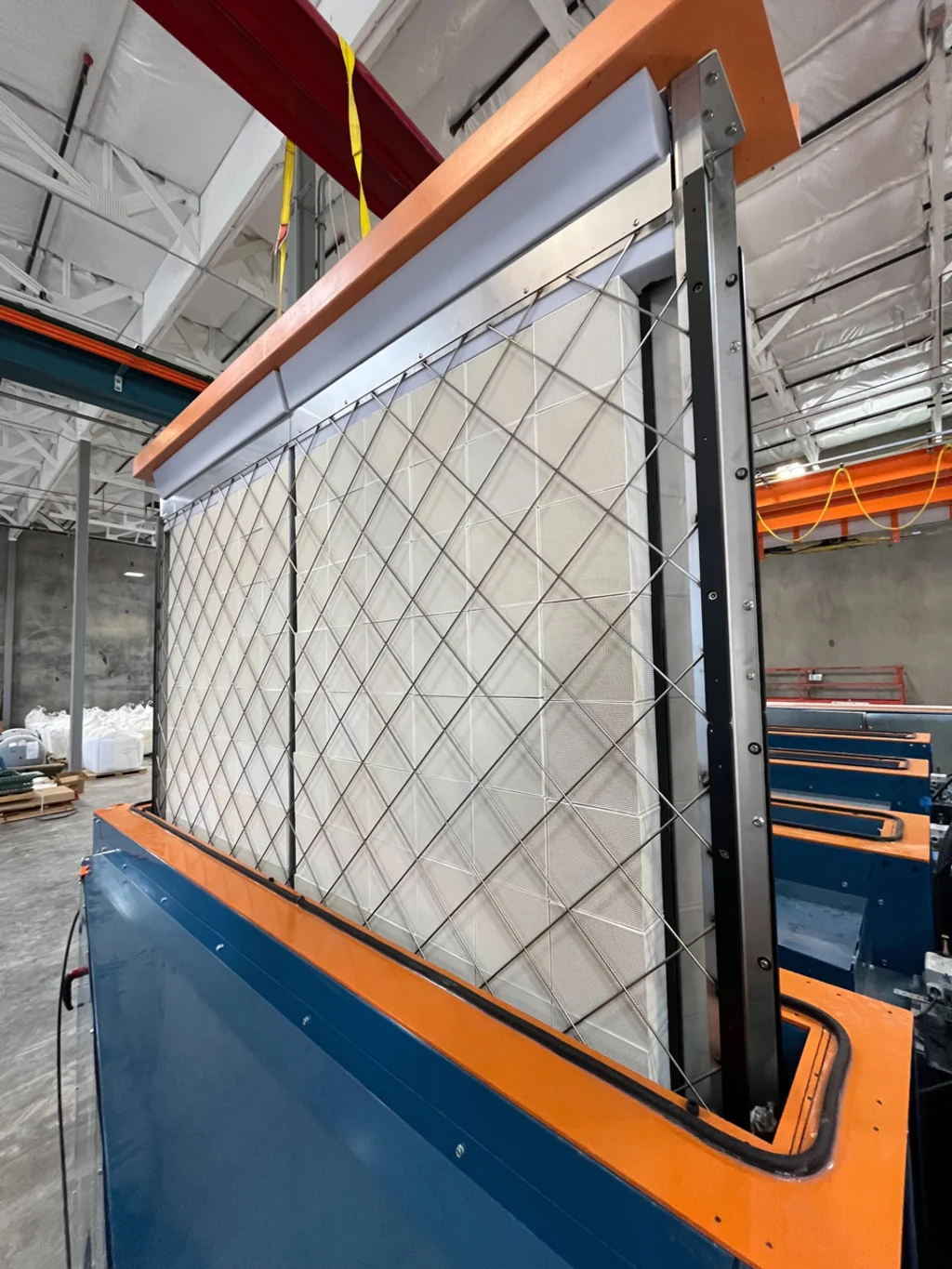
In Las Vegas, a Former Spacex Engineer is Pulling CO2 From the Air to Make Concrete
Published by Todd Bush on March 20, 2025
In an industrial park in North Las Vegas, near an Amazon warehouse and a waste storage facility, a new carbon removal plant is beginning to pull CO₂ from the air and store it permanently.
Called Project Juniper, it’s the first “integrated” plant of its kind in the U.S., meaning that it handles both carbon capture and storage in one place. (As a bonus, it also generates clean water.) Clairity Tech, the startup behind it, designed the new plant after raising a seed round of funding led by Initialized Capital and Lowercarbon Capital last year. After spending the last few months setting up the facility, it ran its full system for the first time last week.Founder Glen Meyerowitz, who previously worked on rocket and spacecraft propulsion testing at SpaceX, pivoted to carbon removal in 2022. “As I look at it, this is really the existential threat of our time and the most important problem that needs to be addressed,” he says. In order for the world to have any chance of meeting climate goals, CO₂ needs to be captured from the air at a massive scale at the same time as the economy decarbonizes. As Meyerowitz researched the space, he saw an opportunity to take a slightly different approach than some other companies.

The Clairity direct air capture reactor in Nevada
>> In Other News: First Atlantic Nickel and Colorado School of Mines Launch Research Partnership to Explore Geologic Hydrogen Potential in Newfoundland Ophiolites
First, Clairity uses a different material to capture CO₂ from the air. “It’s in the same family as baking soda,” Meyerowitz says. “The materials are produced in millions of tons per year for a range of applications.” It’s abundant, cheap, and after it’s filled with CO₂, it takes relatively little energy to remove it. Unlike some other chemicals used for direct air capture, it doesn’t degrade, so it can also be used longer.
The plants are cheap enough to build that they don’t have to run continuously to make economic sense. That means that it’s also possible to run on cheap, intermittent solar power from the grid. (The caveat: The company will be competing with data centers that also want to run on renewable energy and may be willing to pay more.)

Sorbent cartridge being inserted into adsorption station
While many companies in the space plan to inject CO₂ into underground wells, that system isn’t ready yet in the U.S. Clairity is starting with another direction: adding the CO₂ to materials. For example, if it’s combined with fly ash—a byproduct from coal power plants—it can be used to make lower-carbon concrete. It won’t be the first direct air capture company to use CO₂ in concrete:
A startup called Heirloom previously partnered with a cement company. But Clairity is unique in that it handles both steps itself. The CO₂ can also be injected into other waste materials to permanently store it.
Building an underground storage well costs millions of dollars, and the process of getting regulatory approval is slow; building the company’s “ex-situ” mineralization equipment costs less than $70,000. It’s at a much smaller scale, but it allows the company to begin storage now. “We can actually deliver credits today and not from some future project,” Meyerowitz says. There’s also the potential to make more money by selling value-added products rather than only selling credits for storage.
The company expects to be one of two facilities in the world to deliver certified credits for carbon stored this year. The other, 4,000-plus miles away in Iceland, is Climeworks, which partners with CarbFix to inject its captured CO₂ into Iceland’s deep rock formations and naturally turn the CO₂ into stone.
Clairity chose Vegas as its first location for a few reasons. First, the particular sorbent it uses to capture the CO₂ works best in an arid climate (some others, like Climeworks’s, are better in humid climates). Nevada has abundant access to renewable power. The state has relatively little arable land, so there are more potential locations; the company plans to expand in Nevada and other parts of the Southwest. And because the company’s process generates clean water on the side, there’s also a potential market to sell that water to local utilities. (The water is produced when the company heats up its sorbent to release the captured CO₂; water comes out at the same time and is separately stored.) “You can imagine that in water-stressed Las Vegas, that’s a really interesting side benefit,” Meyerowitz says.
For now, it’s operating on a tiny scale. Project Juniper can capture 100 metric tons of CO₂ a year; society generated more than 40 billion tons of CO₂ last year. Clairity’s cost right now is around $700 per ton of captured CO₂—which will need to dramatically decline to be feasible over the long term. (Federal tax credits currently help with the cost, and may be more likely to stay in place than some other climate-related incentives because of strong Republican support.) Despite the challenges, Meyerowitz believes it’s possible for the startup to scale up to an ambitious goal: 10 megatons of CO₂ removal in the next decade, or 100,000 times more than its first project.
Subscribe to the newsletter
Daily decarbonization data and news delivered to your inbox
Follow the money flow of climate, technology, and energy investments to uncover new opportunities and jobs.
Latest issues
-
This U.S. Plant Might Change Aviation Forever
In This Issue 🛫 A Georgia Plant Just Cracked Aviation's Fuel Puzzle 📉 CO2RE And ERM Release 2025 Update On Greenhouse Gas Removal Costs 🔗 Abatable Partners With BlueLayer To Streamline Corporate C...
-
Canada Just Made CCUS Way More Profitable
Inside This Issue 💼 Canada Unlocks EOR for Federal Tax Credits in Landmark Policy Shift 🚀 Carbontech Funding Opens as CDR Sector Pushes for Net-Zero Standard Revisions 💧 CHARBONE Confirms its Firs...
-
The $13.6B Oilfield Deal That's Actually About Clean Energy
Inside This Issue 💼 The $13.6B Oilfield Deal That's Actually About Clean Energy 💸 Waga Energy Signs a $180M Debt Financing to Accelerate Its Expansion in the US 🌫️ Deep Sky Launches Operations of ...
Company Announcements
-
Carbon Capture Technology Relies on High-Performance CO2 Sensors
As the Global South's first Direct Air Capture (DAC) company, Octavia Carbon has commissioned the world's second DAC + geological storage plant. Harnessing Kenya's abundant renewable geothermal ene...
-
Ostrom Climate Responds to Budget 2025 and COP30
BURNABY, BC / ACCESS Newswire / December 4, 2025 / Ostrom Climate Solutions Inc. ("Ostrom Climate" or the "Company") (TSX-V:COO)(Frankfurt:9EAA), a leading provider of carbon project development se...
-
Agreement advances renewable, RFNBO-certified hydrogen production in southern France. Partnership supports logistics and mobility decarbonization across the Provence-Alpes-Côte d’Azur region. ...
-
Minnesota Farmers Eye Crop Shifts to Enter Sustainable Aviation Fuel Market
Some farmers are considering crop rotation changes to tap into the sustainable aviation fuel market. Minnesota Farm Bureau president Carolyn Olson says there are growers in her state looking to gr...